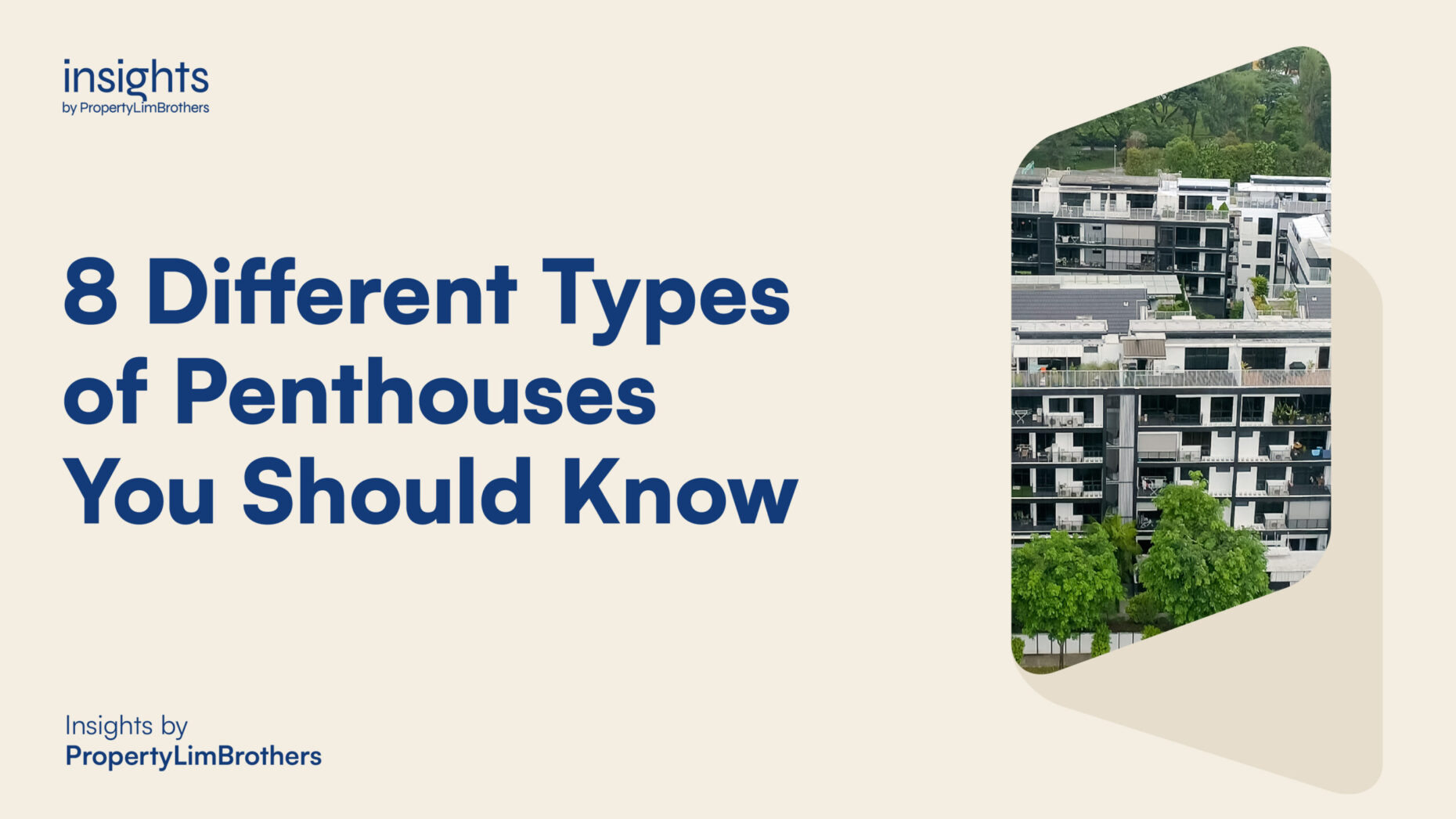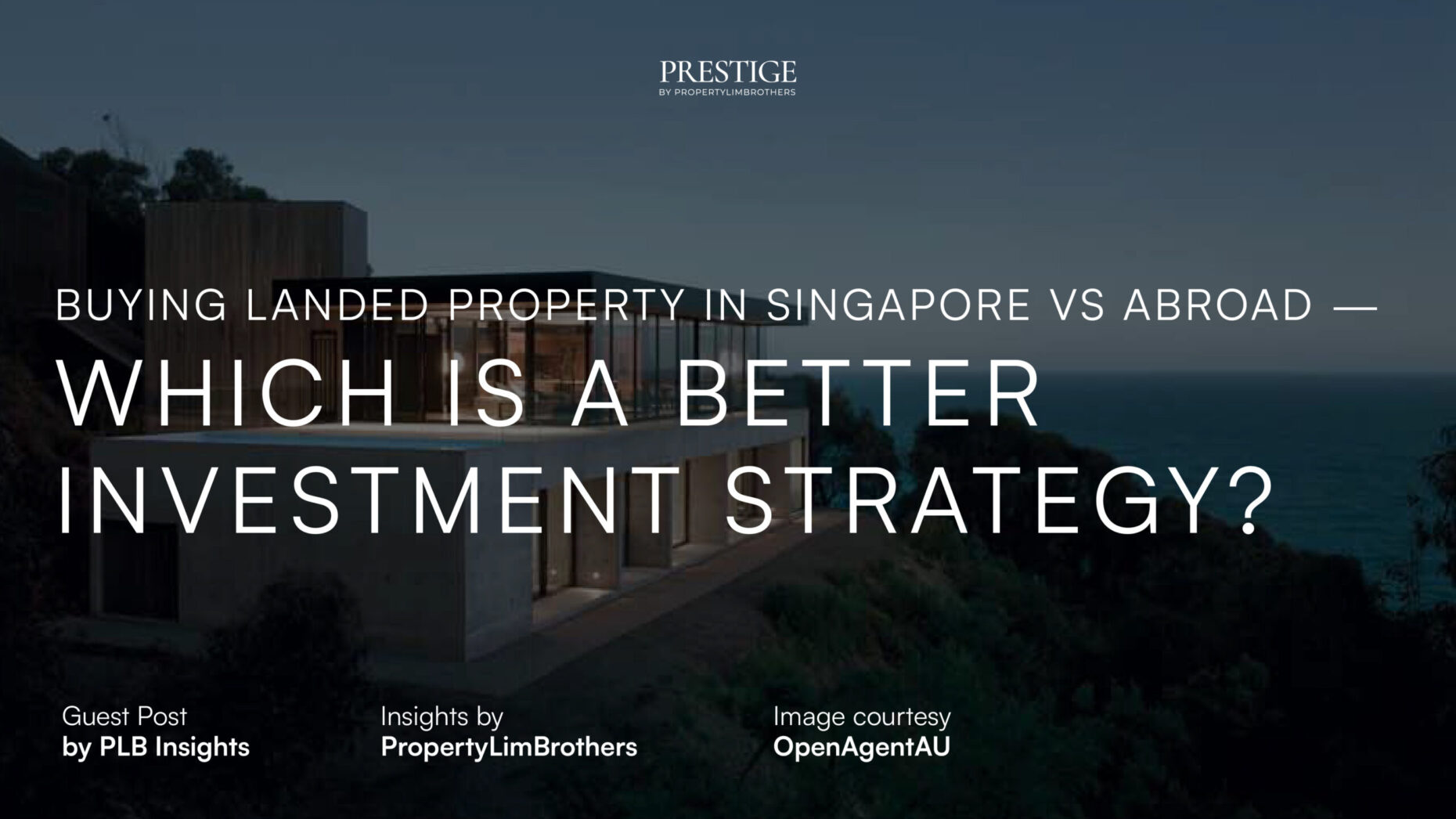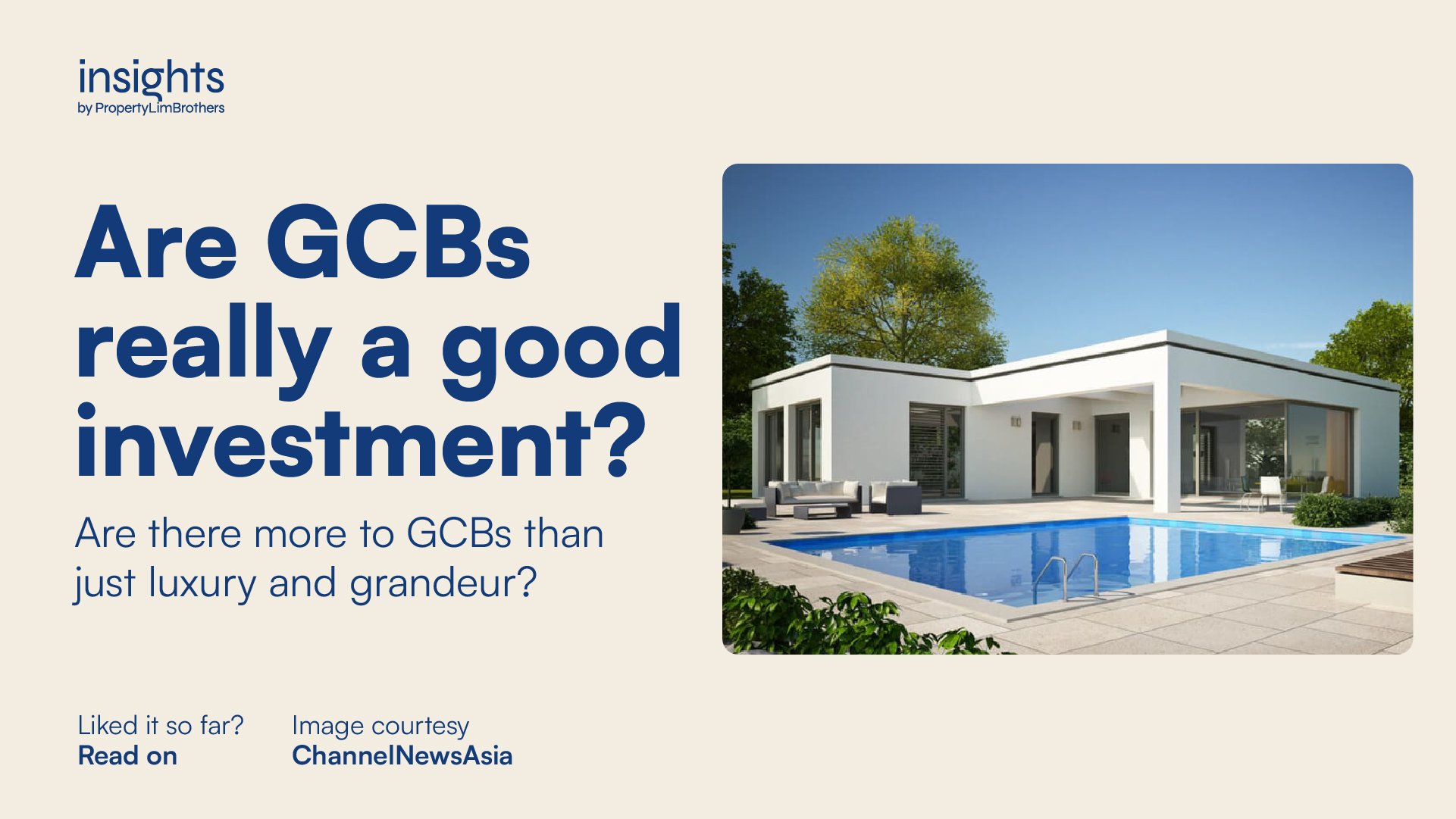
Good Class Bungalows (GCBs) are the pinnacle of real estate in Singapore. This bracket of landed homes are a class of their own, uniquely distinguished by specific sets of criteria. For the unversed, GCBs are not just awe-inspiring, architecturally designed bungalow homes that sit atop vast plots of land, sprawled with gorgeous landscaping and various facilities. GCBs are highly sought after, not mainly because of how these houses look, but the perceived value that runs with the location and land beyond the exterior façade.
Can any huge detached home owned within a massive plot of land be classified as a GCB? Unfortunately not. GCBs are qualified by two distinct sets of criteria: Locational Criteria and Parameter Criteria.
Locational Criteria
One decisive factor determining a GCB is the locational criteria outlined in the Urban Redevelopment Authority’s (URA) Designated Landed Housing Area Plan. Essentially, only detached homes located within the 39 Good Class Bungalow Areas in Singapore are considered GCBs. These gazetted GCB areas are generally situated within the prime residential districts of 10 and 11, and the landed estates of Districts 20, 21 and 23, all within Singapore’s Prime Hexagon.
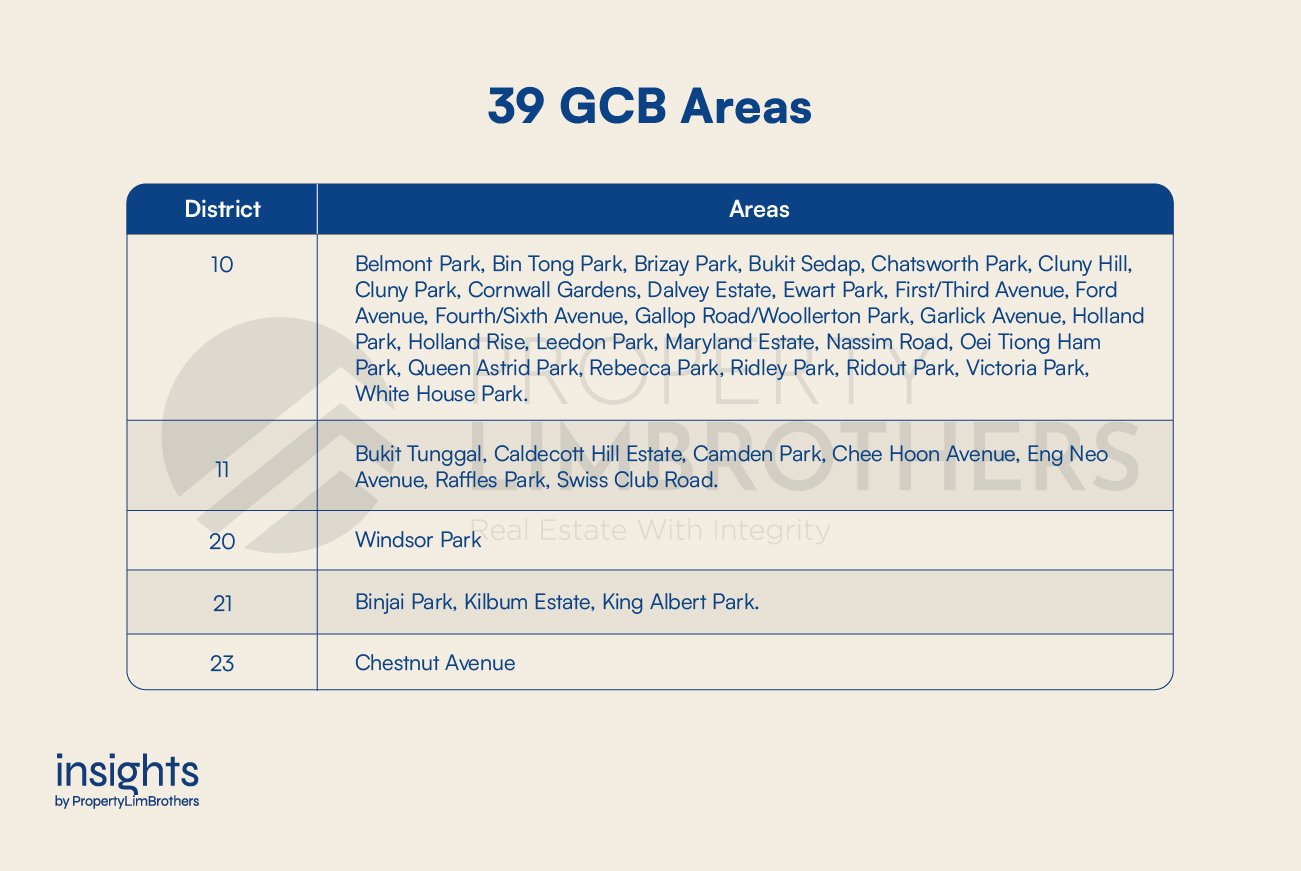
Parameter Criteria
The second key factor that differentiates GCBs from bungalows outside of GCB areas is the parameter criteria for both classes of detached houses, illustrated in the table below.
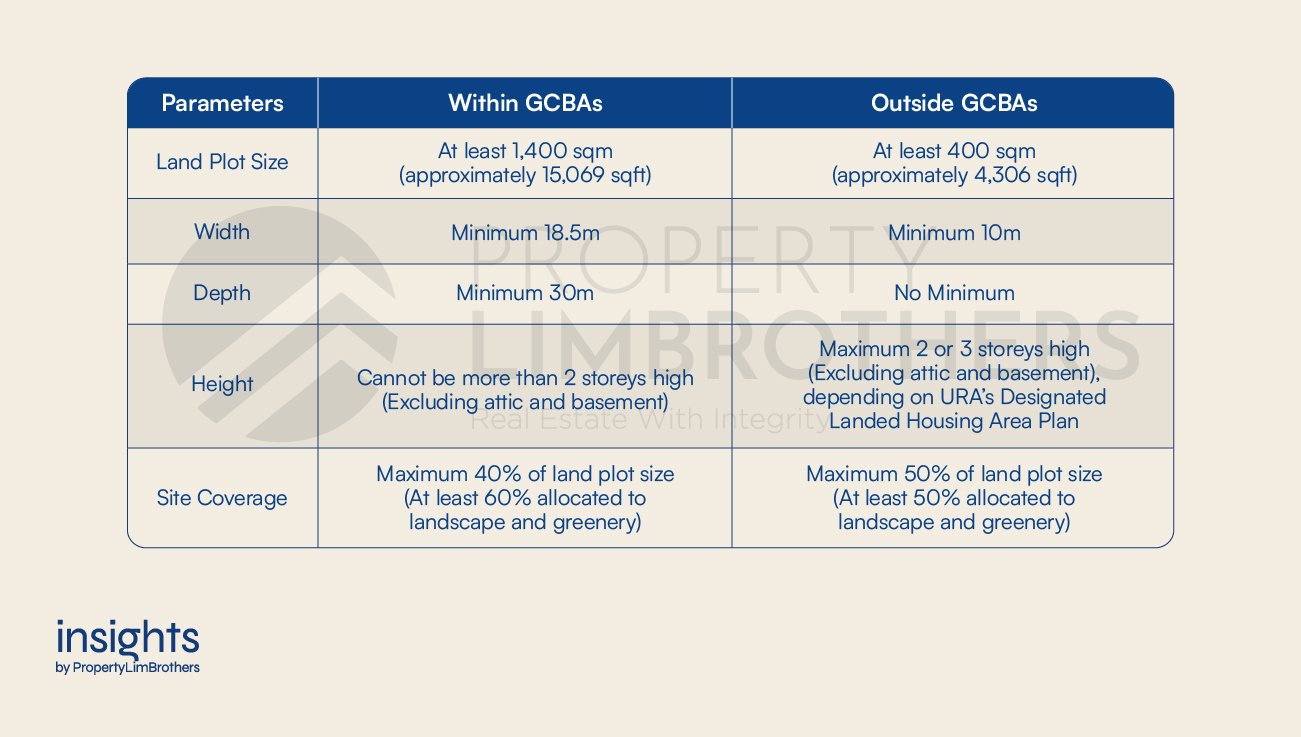
The inherent attributes of GCBs
Being bounded by strict and specific planning conditions, it is no wonder why GCBs are a class of their own. Indeed, GCBs are so highly valuable that the wealthy and affluent are willing to pay unimaginable amounts just to own one. This article looks into the intrinsic and extrinsic attributes to uncover why GCBs are considered as great investments and how this distinctive asset class lives up to its name as the beau monde of real estate in Singapore. We will also discuss the likely expectations of the GCB market for the rest of 2022.
GCBs are a good store of value as they are scarce and rare
An essential intrinsic attribute of GCBs that makes them a good store of value is their scarcity. GCB land plots are scarce in nature. There are about only 2,800 GCB land plots in the whole of Singapore, with perhaps a slightly higher number of actual GCB properties as one land plot can house more than one bungalow. They are generally vast land plots that are freehold or 999-years in tenure and are situated in prime residential zones. Furthermore, they are governed by strict control guidelines to preserve the integrity and composition of such landed areas and the history of these land plots that date back to pre-independence years.
The limited supply of GCBs and their coveted status enables GCBs to stand the test of time and continually appreciate or retain their value.

The average PSF pricing of GCBs has exponentially risen over the past two decades, from an average land rate of $450 PSF in 2002 to $2,000 PSF in YTD 2022 (as of Mar 2022). Had one purchased a GCB back in 2002, that is now about a whopping 450% on the return of investment (ROI). In fact, we have seen a recent uptick of transactions in the PSF price range of $4,000 psf and above. A rare GCB along Cluny Hill had transacted for $63.7M at a record-breaking PSF price of $4,291 PSF in May 2021, while a Nassim Road GCB was purchased in March 2021 by Ms Jin Xiao Qun, wife of the founder of Nanofilm Technologies International, at a staggering quantum of $128.8M, which translates to $4,005 PSF. This proves that GCBs has surpassed all other types of properties to become a league on its own and undeniably reinforces GCBs as the top-choice investment asset among the most affluent Singaporeans.
With the ever-prevalent demand for residential properties in Singapore, coupled with its absolute land scarcity, there is a pressing need for Singapore to intensify its land use. Given the special gazetted status to preserve these GCB areas, it is unlikely that the government will replenish the supply of GCB land plots. This may not be inconceivable, however. URA and Perennial Holdings in January this year announced that the former Caldecott Broadcast Centre would be redeveloped into 15 GCBs, making it the first-ever major 99-year leasehold GCB project (yes, you read it right, 99-year GCBs) to be launched. This proposed GCB site located on Caldecott Hill within prime District 11 will likely form a more affordable GCB alternative to purely freehold or 999-year ones. With the increase in purchasing power of Singapore individuals, this may be one way to meet the overwhelming demands of GCBs, but whether these 99-year GCBs will perform as well remains to be seen.
GCB prices have become akin to the prices of luxury branded goods
One extrinsic attribute that makes GCBs an excellent investment is that GCBs have become the crème de la crème of real estate, much like the top tier luxury branded goods in the fashion industry. Such similarities can be seen between these two distinct assets, specifically their pricing trends and appreciation in value over time.
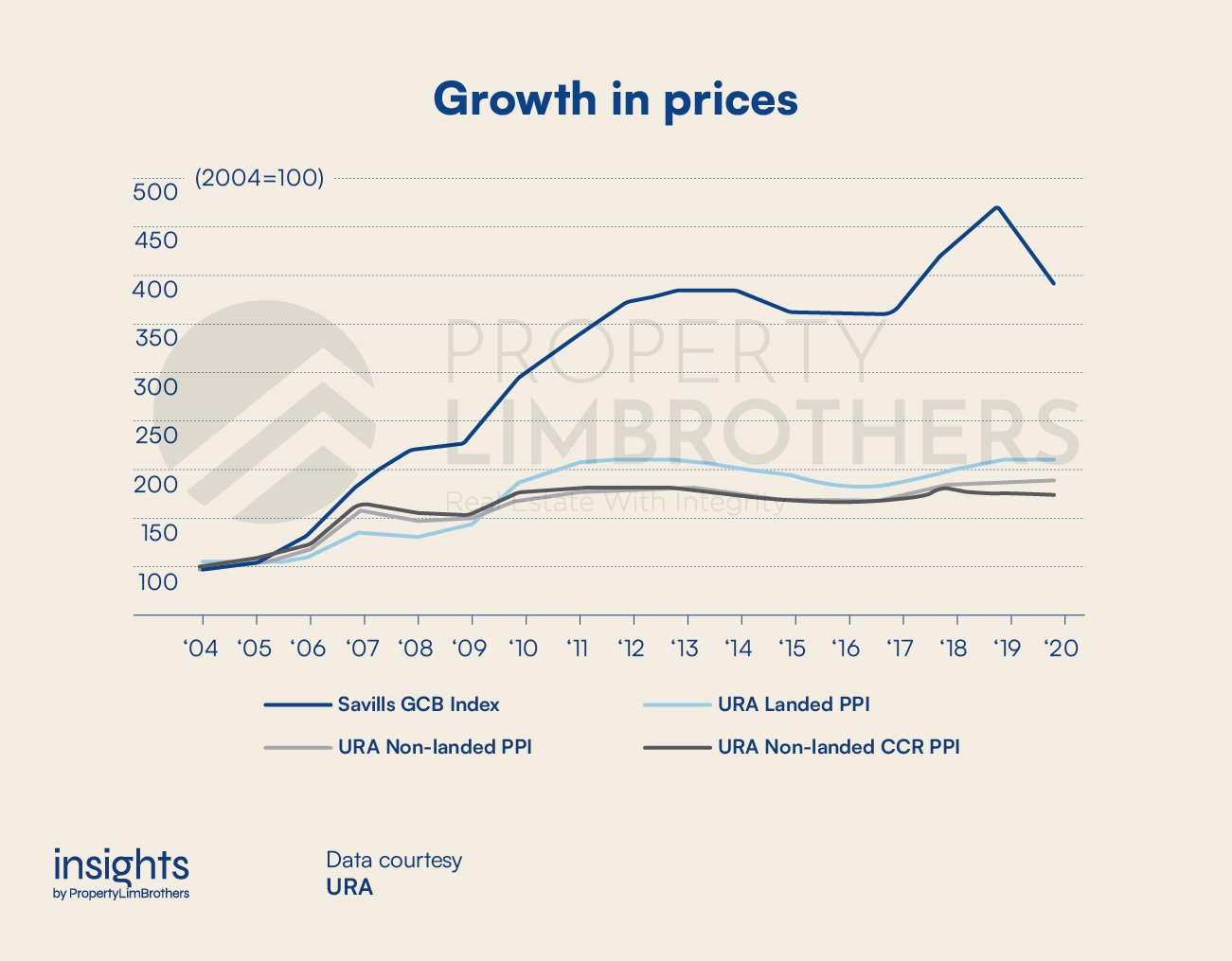
Across the past two decades, the growth in pricing trends for GCBs has accelerated to levels beyond logical explanation. Concerning the graph above, the GCB Property Price Index (PPI) has greatly diverged away from the PPIs of Landed and Non-Landed homes, forming a Chasm Gap between GCBs and other private residential properties.
Similar to the top tier luxury branded goods such as Hermes and Louis Vuitton, the perceived value of GCBs far transcends the actual value. The true value lies in the status and prestige of owning a GCB plus the inherent factors of a GCB itself. This is enough to make sense of the exorbitant prices individuals are willing to pay to acquire one. On top of that, the constant high demand for GCBs, no matter how much prices have inflated to levels that do not make sense, proves how exceptional GCBs perform as an investment.
Owning a GCB is widely seen as the be-all and end-all for the wealthy. It is the ultimate aim and the highest level of attainment of real estate in Singapore. When GCBs become the topic of conversation, one would instinctively associate them with families with generational wealth from entrepreneurial and business success. However, looking at GCB purchasers today, we can see “new money” invested into GCBs, money created from young and new businesses with the rapid development of technologies in the past two decades and the meteoric rise of the Tech and Finance industries. In 2021, some of the most successful Tech CEOs in Singapore have been snapping up GCBs and were willing to pay sky-high transaction prices just to acquire one.
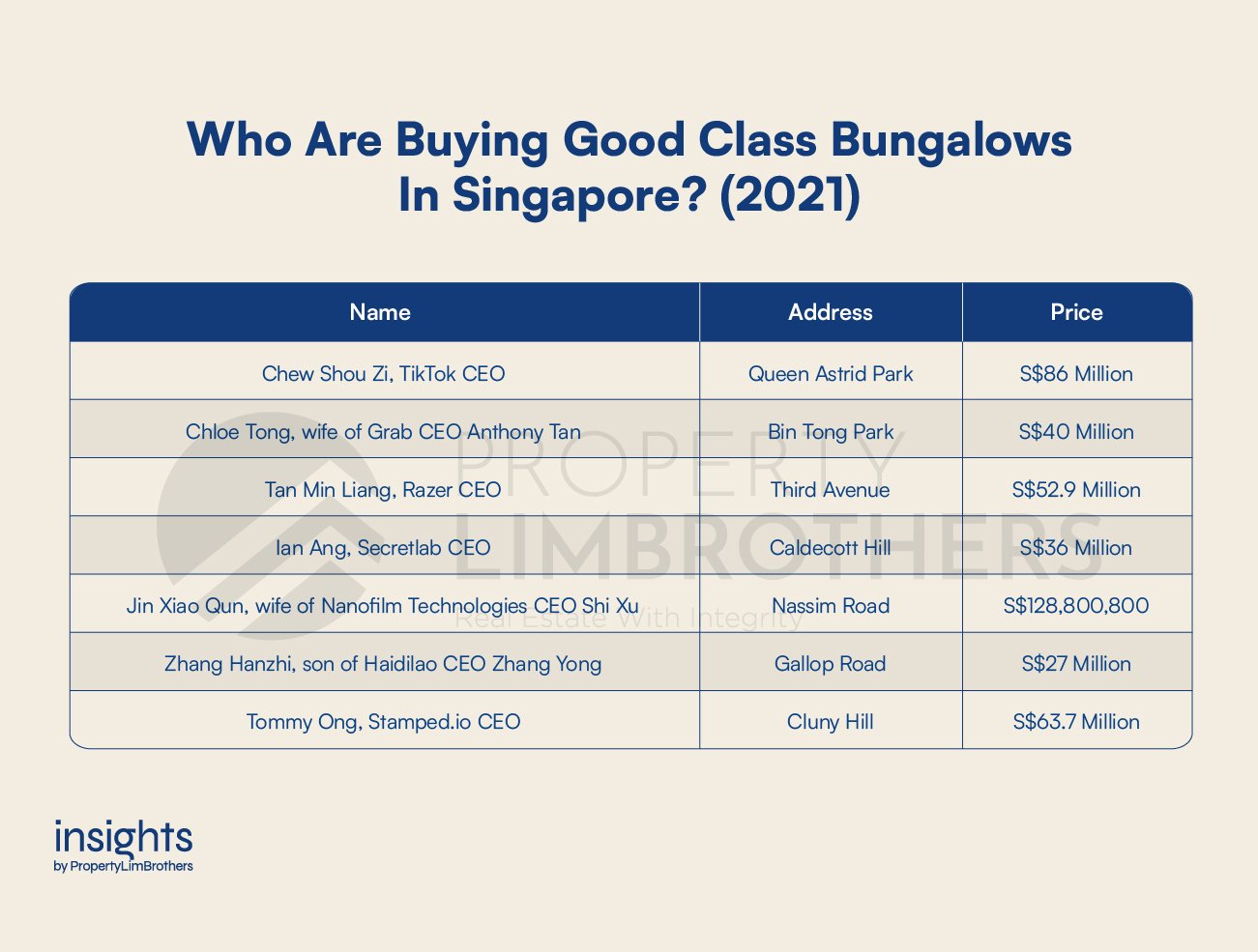
Most GCB owners sit on generational wealth or are flushed with cash. Likewise, the GCB market targets the ultra-rich in Singapore, and there will always be committed buyers with the financial means to purchase one. The ineffaceable allure of GCBs far exceeds the costs of acquisition. Therefore, buyers and owners in the GCB market tend to be less price-sensitive individuals. They are not so much affected by the actual costs of owning a GCB as much as not owning one at all. In fact, GCB sellers are unlikely to worry if other GCB owners are selling at lower PSF prices because most of them have the holding power to own for generations to come and the ability to command astronomical prices if they were to sell.
Even foreign investors are widely fascinated by GCBs
As a matter of fact, the allure of GCBs is so great that even foreign investors are enchanted by the irresistible appeal of owning one.
Similar to private landed residential properties, only Singaporeans or Singapore entities can purchase and own GCBs, regulations that are set in stone likely to prevent undue speculation in the market and foreign investors jacking up GCB prices. However in some cases, exceptions may be given, with approval from the Land Dealings Approval Unit (LDAU) under the Singapore Land Authority (SLA), to Singapore Permanent Residents to purchase a GCB. Interestingly as well, under the Global Investor Programme (GIP), there is a path for foreign investors or businesses to permanent residency if they make specific substantial contributions to the Singapore economy.
A few notable GCB transactions of such circumstances include James Dyson’s purchase of a GCB along Cluny Road for S$45M in 2019 and Kuok Hui Kwong’s purchase of a S$43.5M GCB at Belmont Road in 2018, daughter of Malaysian tycoon Robert Kuok and a Singapore Permanent Resident as well.
Owning a GCB is a good hedge against inflation
Owning a GCB may truly be the best hedge against inflation and rising costs. The pricing trend of the GCB market does not seem to be affected by rising inflation. Specifically, even as the inflation rate increases from 2020 to 2022, GCB prices have also risen.
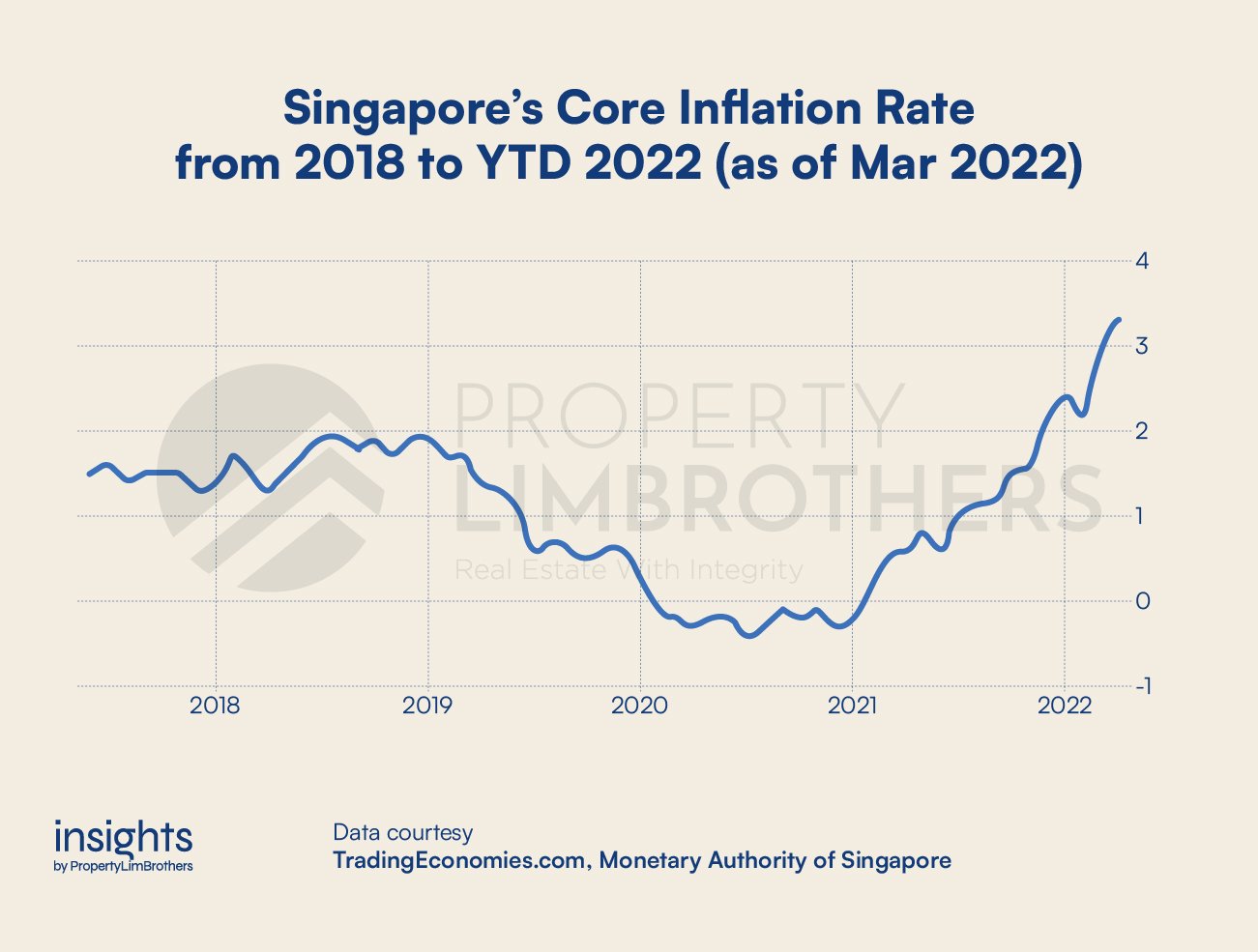
Even in a downturn, we have seen an increase in GCB transactions. Particularly between 2017 and 2018, during the peak of the economic unrest caused by the Sino-US trade war and the weak financial data from China, the total transaction value increased exceptionally from S$888.6M in 2017 to S$1.03 billion in 2018, based on a data analysis done by List Sotheby’s International Realty.
Indeed, GCBs have proven to be a timeless asset to own, parallel to holding on to gold which has maintained its value over the long term notwithstanding cycles of economic recessions.

Image courtesy K2LD
Market Outlook for the second half of 2022
In 2021, the GCB market performed remarkably well as volumes and prices climbed to new highs. With a total transaction value of S$3 billion recorded in 2021, this is almost triple the $1.09 billion in 2020 and superseded the previous record high of $2.43 billion in 2010.
Based on caveats data downloaded as of March this year, we have seen a total transaction value of S$301.11M from 10 transactions this far, indicating continued demand in the GCB market. Even with the cooling measures introduced in December 2021 on an increase in Additional Buyer’s Stamp Duty (ABSD) rates and a reduced Total Debt Servicing Ratio (TDSR) for the private market, this has not deterred any demand as well.
As we head into the second half of 2022, we expect sustained demand for GCB properties, as potential buyers are likely to have the financial means. Sellers are also unlikely to reduce their prices downwards as GCBs have proven to be priceless assets, and they will only divest if prices meet their expectations.
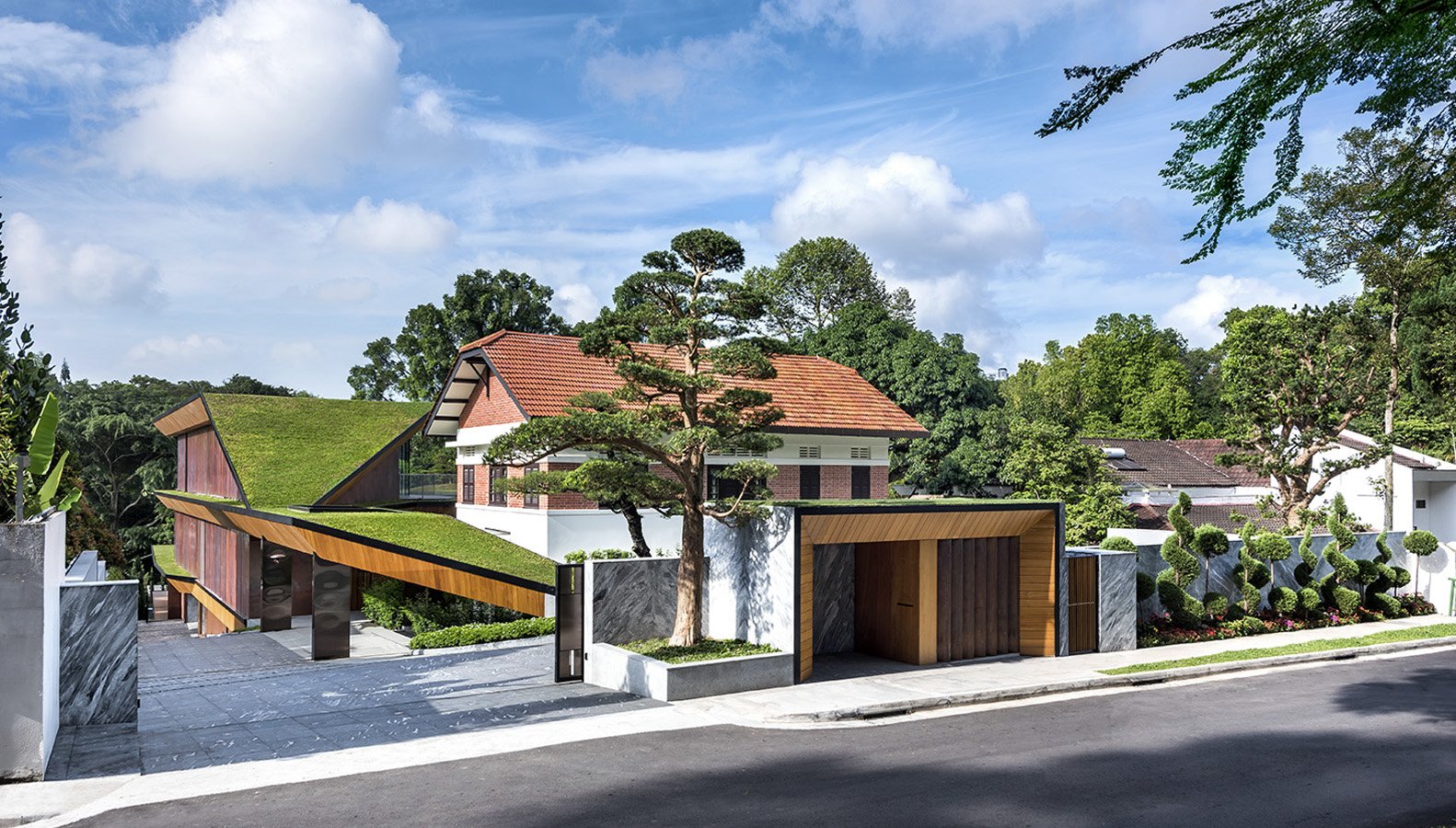
Image courtesy TA.LE Architects
Conclusion
With such attractive attributes, there is no wonder why GCBs remain to be the culmination of real estate investing in Singapore. The allure of its perceived value and benefits is enough to sustain the ever-prevailing appeal to own one and thrust the pricing dynamics upwards to unbelievable highs. Throughout the decades, we have seen the GCB segment propel itself to become truly a class of its own, and due to its inherent attributes, it has proven to retain its value even in rough times.
If you’re on the lookout for luxury homes, or looking to sell off your luxury home, feel free to get in touch with the PropertyLimBrothers team, and we will always be happy to help. Take care, and do keep a lookout for our next article!

